Cycling carries a higher-than-average risk of concussion. Awareness of issues around concussion is on the rise, and there’s been significant change in recent years.
The UCI introduced the first concussion protocol for cycling in 2020.
Here, we look at what you need to know about concussion, what to do in the event of a head injury and the bigger picture in cycling.
What is concussion?

We spoke to Headway, a UK-based brain injury charity, which aims to raise awareness of, and provide education around, head injuries. We asked them to define exactly what is meant by concussion.
Luke Griggs, deputy chief executive of Headway, explains that “a concussion is a type of traumatic brain injury, or TBI, caused by a bump, blow, or jolt to the head, or by a hit to the body.
“The effect of the brain moving rapidly within the skull can cause damage to brain cells or tissue.”
Ultimately, concussion is a change in how the brain functions, which happens because the brain is made up of delicate tissue – less resistant to physical forces than much of our bodies.
The brain sits suspended in cerebrospinal fluid (CSF), which acts as a shock absorber. However, given enough force, it can collide with the skull, or rotate and stretch – causing it damage.
Myth-busting the common misconceptions

Concussion is commonly associated with direct trauma to the head, but it’s not quite so simple.
Any force to the body can also cause a concussion, and while there would certainly be concern for a cyclist who had lost consciousness following head trauma, this is not a prerequisite for sustaining a concussion.
Griggs clarifies this further, saying: “It’s vital that all cyclists educate themselves about the evolving nature and effects of concussion and not rely on outdated myths, such as having to lose consciousness or vomit to be concussed.
“The reality is only around 10 per cent of concussions result in loss of consciousness.”
What are the signs of concussion?

What should you be looking out for if you suspect concussion? There are important signs that a person is concussed, visible to the observer and experienced by the person themselves.
In the initial period, a person may experience a headache or feel pressure in their head, which can be accompanied by feelings of nausea and vomiting.
Balance problems can also be present, with dizziness or blurred vision.
The person might feel sluggish or foggy, with confusion or concentration and memory problems.
To the external observer, it may be evident the person has memory loss and they may answer questions slowly, move clumsily or even lose consciousness.
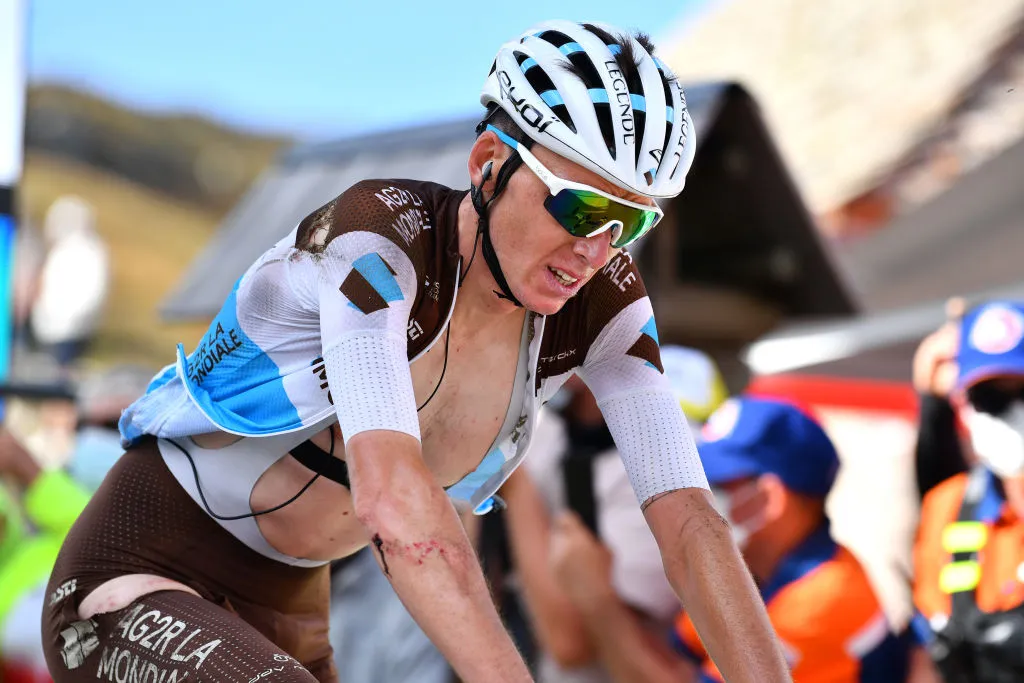
Symptoms such as these form the basis of the UCI’s concussion protocol, which is intended to improve the way head injuries are managed in the professional peloton.
It follows an incident in the 2020 Tour de France when Romain Bardet crashed and continued racing for 90km before being diagnosed with a bleed on the brain.
The protocol brings in a method for first responders to assess riders for concussion with flags for further evaluation, and aims to ensure riders are assessed properly before being allowed to continue – preventing incidents such as Bardet’s.
Common concussion symptoms
| Symptoms experienced | Symptoms observed | Red flags for medical attention | Long-term symptoms |
|---|---|---|---|
| Headache, pressure in the head | Memory loss | Loss of consciousness | Loss of balance, dizziness |
| Dizziness, blurred vision | Moving clumsily, loss of balance | Difficulty staying awake | Headaches |
| Feeling sluggish, foggy | Loss of consciousness | Repetitive vomiting | Change in mood – irritability, anger |
| Feeling confused, unable to concentrate | Vomiting | Fits/seizure | Fatigue, tiredness |
| Memory loss | Bleeding or clear fluid from ears/nose | Memory problems | |
| Sensitivity to lights or noises | |||
| Nausea |
If in doubt, sit it out
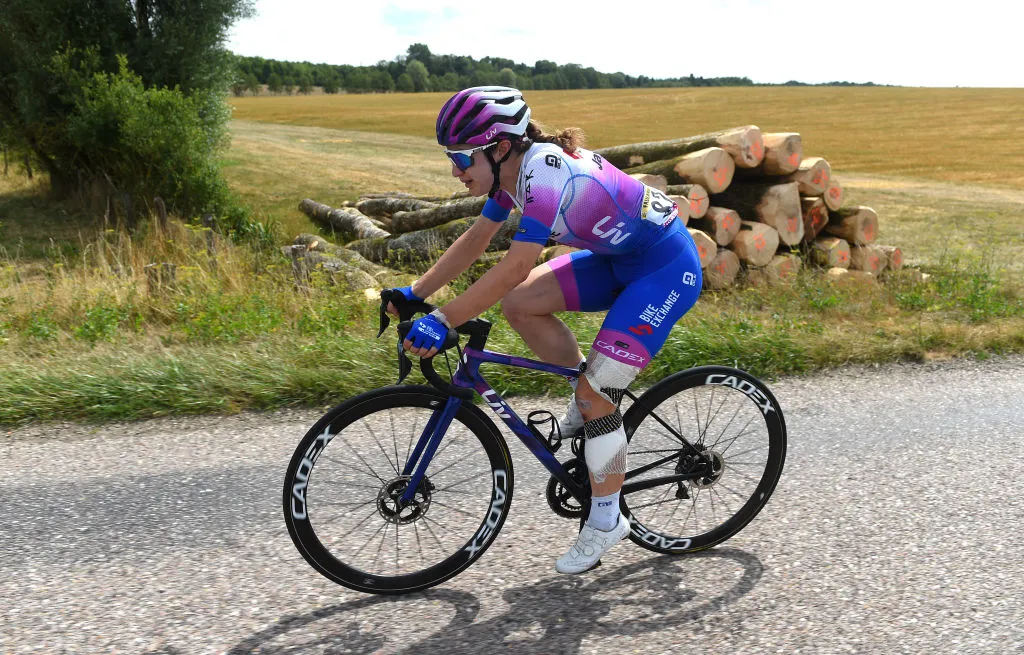
However, while this is certainly progress, concussion diagnosis isn’t entirely straightforward.
Griggs explained that “one of the difficulties with assessing concussion is that symptoms can be delayed in presentation.
“If you consider that those effects can include dizziness or blurred vision, delayed reaction times and impaired processing, the risks of cycling while potentially concussed are significant.”
Erring on the side of caution is certainly warranted – Griggs advocates an “if in doubt, sit it out” approach.
This is backed up by evidence, with a US study of athletes finding those who ceased activity at the time of a concussion recovered faster than those who continued playing – on average returning to sport three days sooner than those who had delayed removal from sport.
However, applying this to cycling may be more challenging than other sports. Races continue while riders are assessed, with no option for time out or substitution – and every second stopped for injury assessment is one the rider will need to claw back.
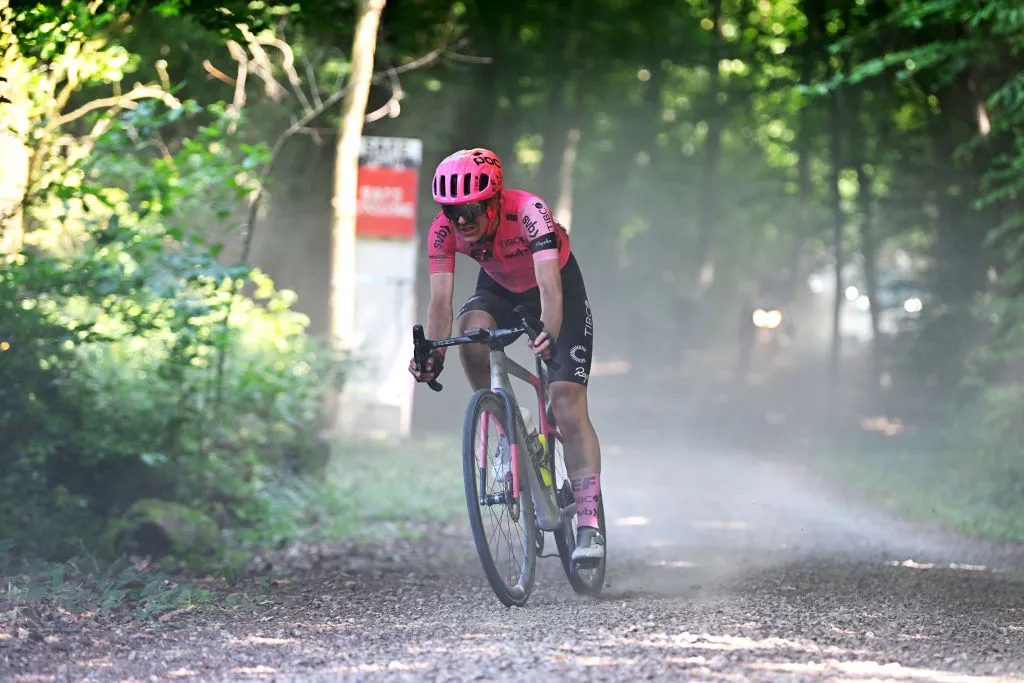
This is an area where professional cyclist and head injury advocate Lizzy Banks says a culture change is needed.
Speaking to BikeRadar, she says that “within the staff and the riders there is a culture where head injuries and symptoms are denied.
“The way to change this is through educating the cycling world as a whole about the signs of concussion and the debilitating effects concussion can have.”
She is hopeful that such education could lead to a culture change in cycling.

She explains that, based on the evidence, it’s in the team’s best interest to be cautious and remove riders from races: “Removing an athlete from play means that not only are you safeguarding their brain health but you are also ensuring a faster and better return to play at a higher level.”
Future technology may play a role in rapid concussion assessment – Banks points to the VR headset device, NeuroFlex, which evaluates oculomotor function, as a potential candidate for use in cycling races. It is currently undergoing development and testing in rugby.
Acute concussion management

The vast majority of us won’t be in a situation where there are team cars or medics around, and it’s worth knowing the basics of what to do if you, or someone you are with, suffers a head injury.
There are clear steps to be taken to try to alleviate symptoms and minimise further damage.
To start, the person should not be allowed to get back on their bike, and will need to be assisted home with someone to monitor them.
NHS England advises use of ice packs on the head over the initial period to try to reduce swelling.
If pain relief is required, paracetamol should be opted for over medications such as ibuprofen or aspirin in the first 24 hours, because these carry an increased risk of bleeding.

Rest is of paramount importance, and a period of complete rest (or as complete as possible) should be undertaken for the first 24 to 48 hours, with a tapered increase in activity following.
Cognitive rest is important alongside physical – mental exertion and exposure to busy situations should be minimised.
This seems to extend to screen use too. Recent research highlighted faster recovery from injury in athletes who abstained from screen time in the first 48 hours compared to those who didn’t. In the study, there was a five-day difference in recovery time on average.
However, official advice is not clear cut and generally suggests avoiding screen time (phones, TVs, laptops) if it exacerbates symptoms.
Reflecting on her own experience, Banks says: “The best advice I can give is; in the immediate aftermath, even if you feel fine, rest and do as little as possible, taking yourself away from things that require mental energy, like busy situations and screens.”
Red flags for medical attention
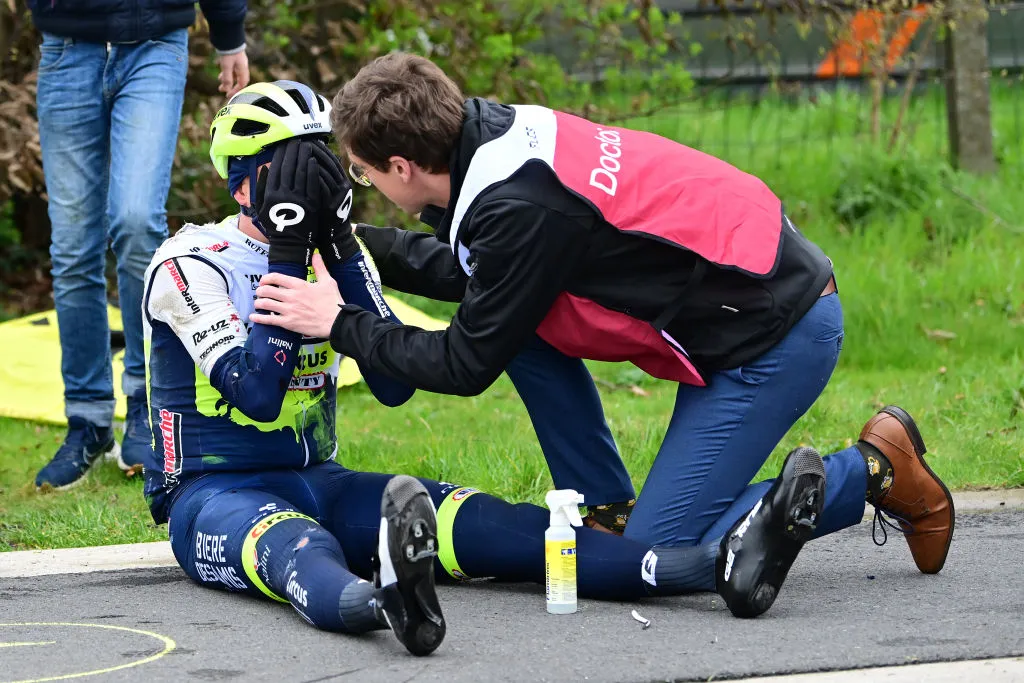
Following the advice above, most minor concussions can be managed at home.
However, there are some red flags to be aware of, which indicate a more severe traumatic brain injury may have occurred.
These include a loss of consciousness – with NHS Scotland stating medical attention should be sought in any instance where there has been loss of consciousness.
Other symptoms of concern include difficulty staying awake or keeping your eyes open, fitting, repetitive vomiting, or bleeding from the ears.
If you are in any way concerned, it is wise to seek medical help.
If you do need to summon the emergency services, the casualty should not be moved unless they would be in danger if left in position.
Post-concussion syndrome: lasting effects of head injury

In some cases, the symptoms of concussion persist – termed post-concussion syndrome when lasting for two weeks or longer.
The symptoms associated with post-concussion syndrome differ slightly from those in the acute phase.
Balance issues may continue, alongside dizziness and headaches. However, there may also be cognitive, emotional and behavioural effects.
These can range from memory problems to heightened fatigue and even mood changes such as irritability or anger.
If this happens, medical advice should be sought because you may need specialist care and rehabilitation.
Road to recovery

Recovery from concussion and a return to racing are hot topics, the big take home message being the need for a slow progression back to sport.
Current advice is to resume light physical and mental activity after the first 24 to 48 hours, with evidence to suggest that complete rest beyond this initial period is not actually beneficial.
When returning to activity, increases should be tapered and gradual, an approach that is well supported by scientific evidence.
Undertaking these increases while remaining symptom-free is key to concussion recovery, with the 2017 Concussion in Sport Consensus promoting a “graduated return to sport”.
Its six-stage return to sport follows a stepwise increase in exercise intensity, with athletes returning to the previous stage if symptoms arise. A similar approach is echoed in the UCI concussion protocol.
The stages start with minimal activity and light aerobic exercise, such as walking, and progress to a return to full training and competition, with athletes returning to the previous stage if symptoms recur.
It's worth remembering that, while this advice is targeted at serious athletes, it can apply to all of us taking part in cycling – tailored to your level of activity.
The key things to remember
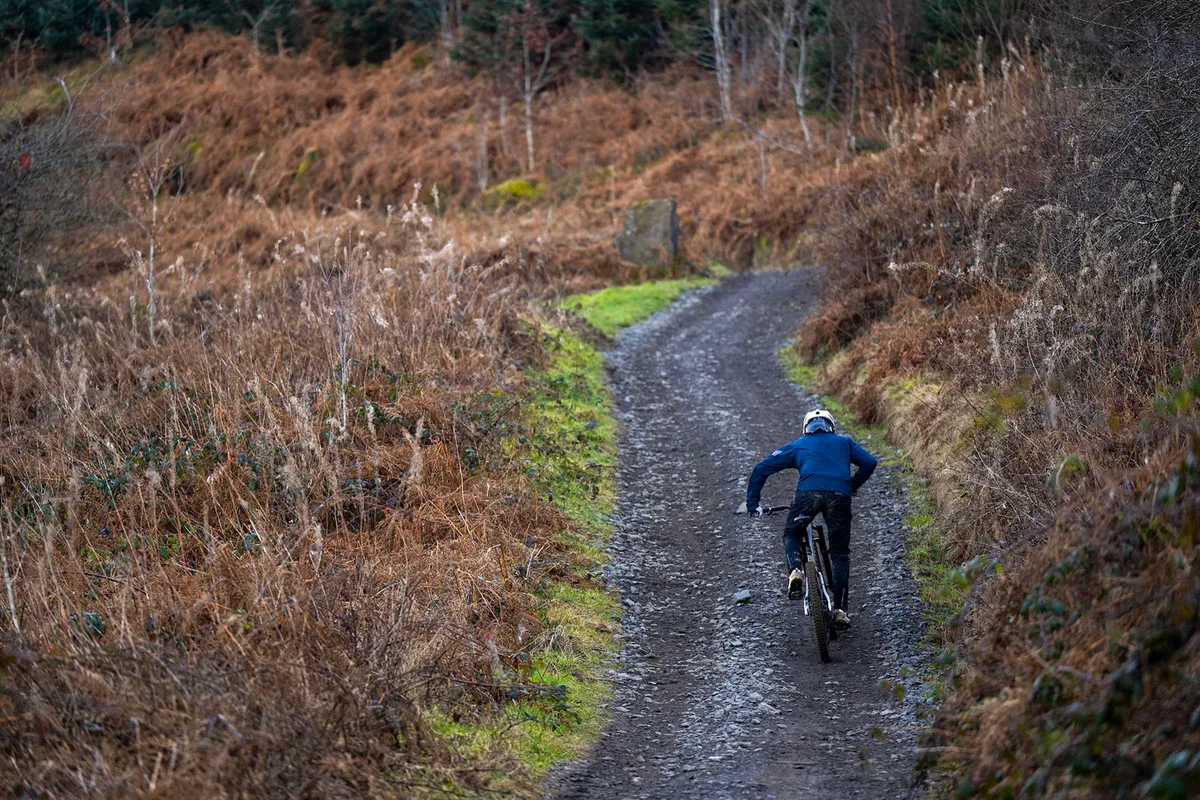
In summary, if you or a friend has had a crash, watch out for the key symptoms of concussion.
If you notice any of the red flags outlined above, seek immediate medical help.
Get an expert medical opinion if you need further advice on recovery from concussion but, in most circumstances, it would be wise to abstain from physical activity and other triggers, while taking a slow approach to your return to cycling.
undefinedundefinedundefinedundefinedundefinedundefinedundefinedundefinedundefinedundefinedundefinedundefinedundefinedundefinedundefinedundefinedundefinedundefinedundefinedundefinedundefinedundefinedundefinedundefinedundefinedundefinedundefinedundefinedundefinedundefinedundefinedundefinedundefinedundefinedundefinedundefinedundefinedundefinedundefinedundefinedundefinedundefinedundefinedundefinedundefinedundefinedundefinedundefinedundefinedundefinedundefinedundefinedundefinedundefinedundefinedundefinedundefinedundefinedundefinedundefinedundefinedundefinedundefinedundefinedundefinedundefinedundefinedundefinedundefinedundefinedundefinedundefinedundefinedundefinedundefinedundefinedundefinedundefinedundefinedundefinedundefinedundefinedundefinedundefinedundefinedundefinedundefinedundefinedundefinedundefinedundefinedundefinedundefinedundefinedundefinedundefinedundefinedundefinedundefinedundefinedundefinedundefinedundefinedundefinedundefinedundefinedundefinedundefinedundefinedundefinedundefinedundefinedundefinedundefinedundefinedundefinedundefinedundefinedundefinedundefinedundefinedundefinedundefinedundefinedundefinedundefinedundefinedundefinedundefinedundefinedundefinedundefinedundefinedundefinedundefinedundefinedundefinedundefinedundefinedundefinedundefinedundefinedundefinedundefinedundefinedundefinedundefinedundefinedundefinedundefinedundefinedundefinedundefinedundefinedundefinedundefinedundefinedundefinedundefinedundefinedundefinedundefinedundefinedundefinedundefinedundefinedundefinedundefinedundefinedundefinedundefinedundefinedundefinedundefinedundefinedundefinedundefinedundefinedundefinedundefinedundefinedundefinedundefinedundefinedundefinedundefinedundefinedundefinedundefinedundefinedundefinedundefinedundefinedundefinedundefinedundefinedundefinedundefined